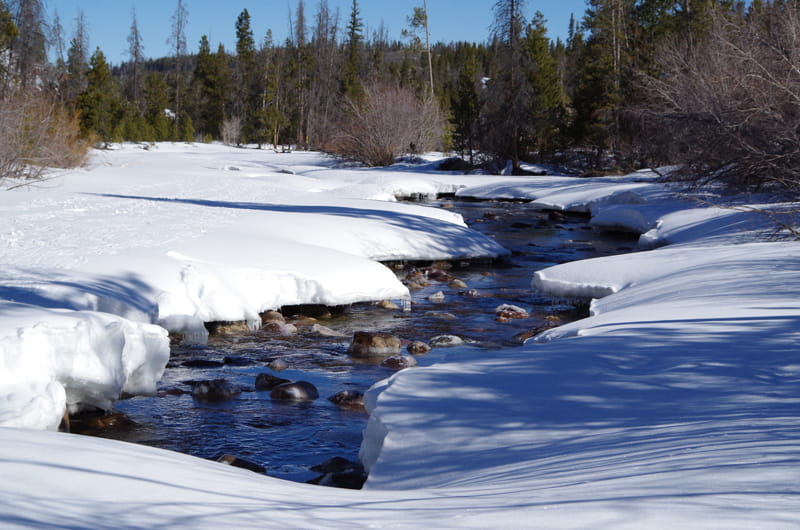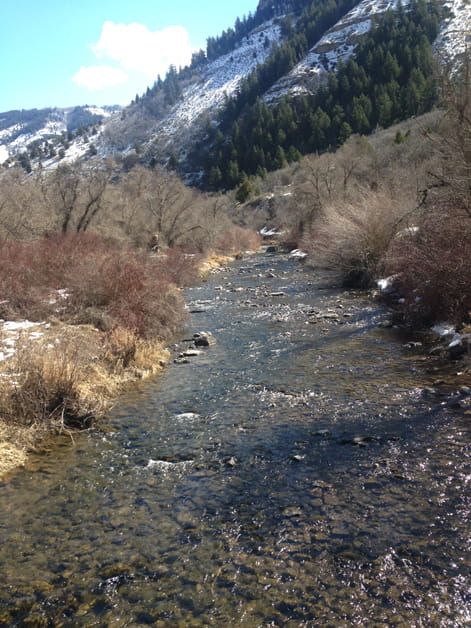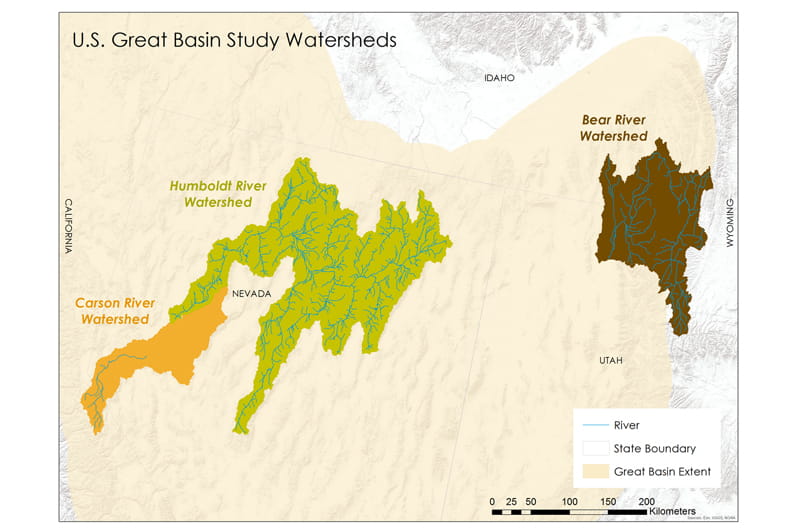Un-Muddying Waters: Drexel Researchers Studying Climate Change in Mongolian, U.S. Rivers
 By Frank Otto
By Frank Otto

Control groups are key to scientific study. As the subjects not affected by the variable a scientist is testing, the control group serves as an untainted measuring stick for researchers.
With the help of a $4.2 million grant awarded by the National Science Foundation to a consortium of American institutes including the Academy of Natural Sciences of Drexel University, researchers will focus on a control — rivers in relatively undeveloped areas of Mongolia — as a lens to view changes that large rivers undergo during increased direct human interference and climate change.
The consortium of institutions will split the grant over the span of five years to study 18 rivers in temperate grassland (known as steppe) biomes — an ecosystem type shared by much of Mongolia and the Great Plains/Great Basin regions of the United States.

“Having this study on two different continents allows research of not just the differences in these rivers, but it allows you to see common factors, too,” said Jon Gelhaus, PhD, curator of Entomology at the Academy of Natural Sciences and professor in the Department of Biodiversity, Earth and Environmental Sciences of Drexel University. “For example, Mongolia appears to be experiencing global warming in a more pronounced way than in North America. But with Mongolia’s low human population and reliance on nomadic grazing, the rivers and their surrounding watersheds are not strongly impacted by other agriculture and development.”
In the meantime, in the western areas of the United States there are “all the complicating factors of human intervention, including crops and livestock, dams and population centers,” according to Gelhaus.
The roles of aquatic insects and other invertebrates will be the focus of the Academy team in the study. Other teams will focus on fish communities, food webs and system metabolism, hydrology and river structure and riparian vegetation (plants along the riverbanks).
The study will take a macrosystem-level look at these rivers — examining factors from the scale of the entire ecosystem as opposed to focusing on just smaller indicators.

“This is something new. A lot has been done on a smaller scale, such as just looking at one drainage system or one river system,” explained Alain Maasri, PhD, a research scientist at the Academy. “The intercontinental comparison between grassland rivers and the scale of this project will allow us to understand how both global events (like climate change) and local ones (like flow alteration) affect the function and the integrity of our river systems and their biological communities.”
That’s why the study of the Mongolian rivers is so important. Looking at rivers in Mongolia, researchers are essentially looking into the past history of American rivers, before damming and other human activities affected them. And the heightened climate change in Mongolia may help scientists understand the future effects coming to American rivers as climate change develops state-side.
At the same time, study of American rivers can help parse the future of Mongolian rivers. For the first time, Mongolia is considering constructing hydro-electric dams. It’s important to study the rivers now before such a change occurs, as the cases developed from the study of American rivers and their function after extensive damming may help Mongolians understand what changes could occur in their rivers.

A meeting of all the collaborators from the United States and Mongolia took place in Salt Lake City this month to nail down which rivers in North America will be studied in 2016. Based on thorough analysis and discussions, and even traveling along the actual sites, the rivers that will be sampled this summer will be the Bear (which encompasses parts of Idaho, Wyoming and Utah), the Humboldt (in Nevada) and the Carson (stretching between California and Nevada). Later this year, the sites to be sampled in Mongolia in 2017 will be decided.
Drexel’s team has high hopes for what this study will uncover.
“This is an unprecedented study in its scope within and between continents,” Gelhaus said. “This is taking an overarching view of an entire type of ecosystem.”
More information and updates are available on the project’s official website, which can be accessed here.
Drexel News is produced by
University Marketing and Communications.
